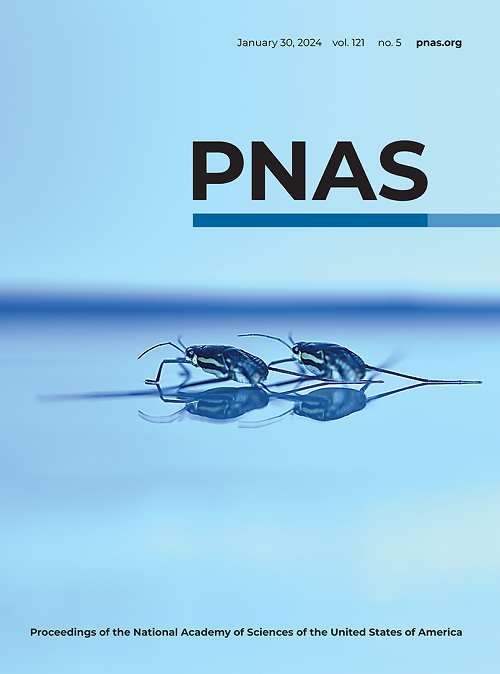Structural assembly of the PAS domain drives the catalytic activation of metazoan PASK
IF 9.4
1区 综合性期刊
Q1 MULTIDISCIPLINARY SCIENCES
Proceedings of the National Academy of Sciences of the United States of America
Pub Date : 2025-03-19
DOI:10.1073/pnas.2409685122
引用次数: 0
Abstract
PAS domains are ubiquitous sensory modules that transduce environmental signals into cellular responses through tandem PAS folds and PAS-associated C-terminal (PAC) motifs. While this conserved architecture underpins their regulatory roles, here we uncover a structural divergence in the metazoan PAS domain–regulated kinase (PASK). By integrating evolutionary-scale domain mapping with deep learning-based structural models, we identified two PAS domains in PASK, namely PAS-B and PAS-C, in addition to the previously known PAS-A domain. Unlike canonical PAS domains, the PAS fold and PAC motif in the PAS-C domain are spatially segregated by an unstructured linker, yet a functional PAS module is assembled through intramolecular interactions. We demonstrate that this assembly is nutrient responsive and serves to remodel the quaternary structure of PASK that positions the PAS-A domain near the kinase activation loop. This nutrient-sensitive spatial arrangement stabilizes the activation loop, enabling catalytic activation of PASK. These findings revealed an alternative mode of regulatory control in PAS sensory proteins, where the structural assembly of PAS domains links environmental sensing to enzymatic activity. By demonstrating that PAS domains integrate signals through dynamic structural rearrangements, this study broadens the understanding of their functional and regulatory roles and highlights potential opportunities for targeting PAS domain–mediated pathways in therapeutic applications.求助全文
约1分钟内获得全文
求助全文
来源期刊
CiteScore
19.00
自引率
0.90%
发文量
3575
审稿时长
2.5 months
期刊介绍:
The Proceedings of the National Academy of Sciences (PNAS), a peer-reviewed journal of the National Academy of Sciences (NAS), serves as an authoritative source for high-impact, original research across the biological, physical, and social sciences. With a global scope, the journal welcomes submissions from researchers worldwide, making it an inclusive platform for advancing scientific knowledge.

 求助内容:
求助内容: 应助结果提醒方式:
应助结果提醒方式:


